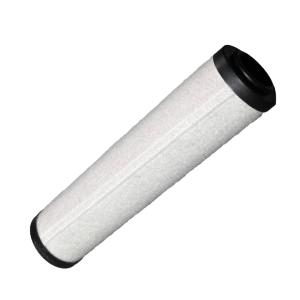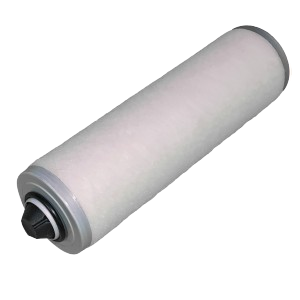- sales@biolabmarket.com
- +1 (469) 819-5592
exhaust filter vacuum pump
In industrial and laboratory processes, creating a vacuum is a critical step. Oil-based vacuum pumps are among the most common types and are widely used to generate vacuum in various industries. The proper operation and longevity of these pumps heavily depend on using a suitable vacuum pump separator filter. This filter is responsible for separating oil particles from the outgoing air stream and, depending on the application, comes in different types.
What is a Vacuum Exhaust Filter?

A separator filter (Exhaust Filter) is a component of a vacuum pump that separates oil particles from the air. It is usually installed at the pump’s outlet and prevents oil particles from entering the environment or damaging the pump by separating fine oil particles from the air–oil or water–oil mixture. Allowing oil particles to return to the pump can reduce efficiency, increase friction, and ultimately damage the pump.
How the Exhaust Filter Works?
When an oil-based vacuum pump operates, air and oil mix and exit the pump. This mixture enters the Exhaust Filter, which captures the oil particles and releases only clean air into the environment.
The separation mechanism of the filter generally occurs in two ways:
- Centrifugal Force: The air–oil mixture enters a rotating chamber at high speed. Heavier oil particles collide with the chamber walls and are separated.
- Surface Adsorption: Oil particles stick to the surface of the filter fibers and are removed from the air stream.
Components of the Exhaust Filter

The main components of an oil-based vacuum pump Exhaust Filter include:
- Filter Body: Made of corrosion-resistant materials such as stainless steel, alloy steel, or polyester, providing a sealed housing for the other components.
- Internal Element: Includes corrugated or mesh plates that increase the contact surface with the air stream, enhancing separation efficiency.
- Industrial Felt: Made of microfiberglass or silicone fabric, allowing air molecules to pass while blocking oil molecules.
- Inlet and Outlet Covers: Used to connect the filter to the pump, typically made of stainless steel, aluminum, or Teflon.
- Element Retainer Plate: Prevents deformation of the element and felt and ensures uniform airflow distribution.
Signs of Exhaust Filter Failure
Exhaust Filter failure can occur due to oil particle accumulation, contamination, prolonged use, or incorrect installation. Common signs include:
Visual Signs:
- Filter discoloration or darkening
- Oil leakage around the filter
- Burning smell in case of complete blockage
Operational Signs:
- Reduced pump efficiency
- Increased pump temperature and damage to other components
- Higher energy consumption
- Unusual noise or even smoke from the pump
If any of these signs appear, consulting a vacuum pump specialist is recommended.
Choosing the Right Exhaust Filter
Key factors in selecting the appropriate filter include:
- Operating pressure and environment
- Filter mesh size (pore size and number)
- Material of the element and body
- Type and viscosity of the oil
- Level of incoming air contamination
- Airflow rate
- Pump and filter dimensions
- Price and brand
Replacing the Exhaust Filter
Over time, the Exhaust Filter becomes clogged and loses efficiency. Timely replacement according to the manufacturer’s instructions prevents pump damage and maintains performance. The typical service life of the filter ranges from 1,000 to 4,000 hours, depending on the filter’s quality and materials.
If a replacement is unavailable, the filter can be temporarily cleaned with diesel, but this is only a short-term solution.
Conclusion
The separator filter is an essential component in vacuum pumps, playing a crucial role in pump protection, efficiency improvement, and environmental safety. These filters are widely used across industries such as petrochemical, pharmaceutical, food, and electronics.
